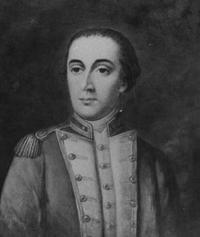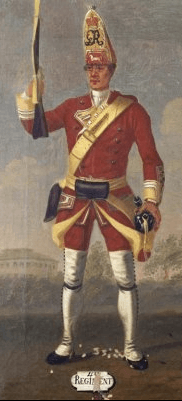Fort Vieux Logis facts for kids
 |
|
| Established | 1749 - 1754 |
|---|---|
| Location | Hortonville, Nova Scotia, Canada |
| Type | National Historic Site |
Fort Vieux Logis was a small British fort built in 1749 in what is now Hortonville, Nova Scotia, Canada. It was also known as Fort Montague later on. This fort was built during a time of conflict called Father Le Loutre's War. A military leader named John Gorham brought a small wooden fort, called a blockhouse, from Annapolis Royal to this spot. The fort was used until 1754. The British rebuilt it in 1760 during the French and Indian War and called it Fort Montague.
The exact spot where the fort stood is not known today, even after people have searched for it. It is located near where the Acadian Cross and the New England Planter's monument stand.
Even though the British took control of Acadia in 1710, most people living in Nova Scotia were still Catholic Acadians and Mi'kmaq. During an earlier war, King George's War, the British tried to expand their control into areas like Grand Pre. They built a defensive wall, called a palisade, which was part of the Siege of Grand Pré.
Father Le Loutre’s War
Father Le Loutre's War started when Edward Cornwallis arrived in Nova Scotia on June 21, 1749. He came with 13 ships to create a new British settlement called Halifax. The British quickly started building other towns and forts. To protect these new settlements from attacks by the Mi'kmaq, Acadians, and French, they built forts in places like Halifax (1749), Bedford (Fort Sackville) (1749), Dartmouth (1750), Lunenburg (1753), and Lawrencetown (1754).
Within 18 months of starting Halifax, the British also built forts in major Acadian communities. These included Windsor (Fort Edward), Grand Pre (Fort Vieux Logis), and Chignecto (Fort Lawrence). There was already a British fort at Annapolis Royal, Nova Scotia. Fort Vieux Logis was built to help stop Acadians from leaving the area.
A person named Henry Grace wrote about Fort Vieux Logis in his journal. He said it was built with square timbers, stacked one on top of another, and had blockhouses inside, similar to Fort Edward. He also noted that there wasn't much open land around it, only where the French Neutrals (Acadians) used to live.
Attack on Fort Vieux Logis
On November 27, 1749, about 300 fighters from the Wabanaki Confederacy (Mi'kmaq and Maliseet people) and Acadians attacked the British Fort Vieux Logis. Captain John Handfield was in charge of the fort. While exploring the area around the fort, Lieutenant John Hamilton and eighteen soldiers, including Captain Handfield's son, were captured.
After the soldiers were taken, the native and Acadian groups tried several times to surround and take over the fort during the next week. Eventually, they left with their prisoners. Gorham’s Rangers were sent to help the fort, but by the time they arrived, the attackers had already left with the prisoners. The captured soldiers were held for several years before they were released.
In October 1750, there was an attack on Halifax. Mi'kmaq warriors attacked British people in the woods, taking six prisoners. Cornwallis's gardener and his son were attacked; the son was killed and buried, while the gardener's body was left behind. Cornwallis thought the other six prisoners were also killed. Five months later, he found out they were being held at Grand Pre. In response, Cornwallis had soldiers from Fort Vieux Logis negotiate for the release of the British prisoners.
By November 1, 1753, Captain Cox was the commander of Fort Vieux Logis.
The fort was not very strong. Its walls were so low that snowdrifts often covered them, and nearby hills could easily overlook it. Because of these problems, the British decided to leave the fort in 1754. When new British troops came to Grand Pre in 1755 for the Expulsion of the Acadians, they chose to use the church at Grand Pre as their main base instead of the old fort.
The blockhouse was rebuilt in 1760 and renamed Fort Montague. It was named after Montague Wilmot.
Commanders of the Fort
- Captain John Handfield
- Captain Matthew Floyer
- Nicholas Cox (commander from 1753–54), who later commanded at Fort Edward.




